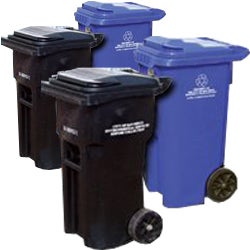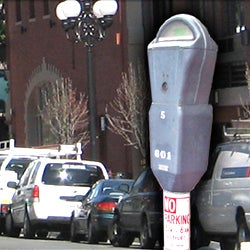Frequently Asked Questions
My neighborhood is listed as “Identified in Master Plan”. What does this mean?
Identified in Master Plan simply means that the city is aware that there are overhead lines in your neighborhood in which they intend to eventually underground. However, there is no undergrounding timeline developed. This means we do not know when your community will be undergrounded.
What is the next step after Identified in Master Plan"?
After this phase your community will begin project delivery in the Preliminary Studies phase. There are multiple steps required in this phase for your community project to proceed. These include an extensive environmental review of the project’s impacts. The City also requests preliminary costs for the project from SDG&E. The outcome of the environmental analysis combined with a check of adequate initial funding determines whether the project is then brought to City Council for District Creation. City Council must then vote in favor to create an Underground Utility District for the selected project, in accordance with the San Diego Municipal Code. When this hearing is being scheduled for a project, all residents and property owners within the proposed Underground Utility District are mailed a Public Hearing Notice and a map of the proposed area to be converted to underground. Therefore, you will know when this is happening in your neighborhood. Once City Council has created an Underground Utility District, the project moves into the design phase, which is followed by construction. For a full description of the District Creation process through to project completion, please visit our Undergrounding Process page.
When will my street have the overhead lines undergrounded?
Please visit the UUP Undergrounding Map for up-to-date information on undergrounding projects. Please check back periodically, as this website is updated regularly.
My neighborhood is getting undergrounded. As a property owner, will this cost me anything?
In most cases, no, if the property owner signs a Permit to Enter letter allowing the City of San Diego and its agents to perform all necessary trenching and meter panel conversion work needed within the property. Property owners may elect to not allow access for the conversion and instead fund the conversion themselves. If the City inspector finds that your existing electric meter panel does not meet minimum code requirements, you will be notified, and you may be required to fix the existing electrical code violation at your cost. Please contact us if you have questions or concerns specific to your property.
How are undergrounding projects funded?
Utility ratepayers fund “surcharge” projects through small surcharges in their monthly bills. Funding for these projects does not come from the City’s General Fund, which is the primary operating fund that pays for services such as police, fire, parks and recreation.
You have the right to attend and to express your views against or in favor of creating the Underground Utility District. However, you are not required to attend.
What companies are involved in an undergrounding project?
The City of San Diego works in collaboration with SDG&E, AT&T, Crown Castle, Cox Communications, Charter, and/or any other utility companies that are currently using the power poles, on all projects.
I have received a notice in the mail. What does this mean?
- Boundary Map – The boundary map is created with the help of SDG&E and all communications utility companies. The boundary map is presented to council and is used to create the undergrounding district. SDG&E designs accordingly within the boundary. If any changes to the boundary are needed SDG&E will let the City know, in which case the City will revise the boundary and re-send to all parties.
- Pre-Public Hearing Notice - Sent to all constituents in the boundary to inform them of the district creation. This notice is required to be in the constituents mailboxes at least 15 days prior to the public hearing date per municipal code.
- Post Public Hearing Notice - Sent to all constituents in the boundary to notify them that the district was created successfully.
- Permit to Enter Form (PTE) - A “fact sheet” is included with the PTE mailings as well. Once PTEs are returned signed they are shared with SDG&E. A PTE allows SDG&E to connect a property to the underground system. Once a property owner signs a PTE, UUP will perform the activities needed to underground the utilities and connect to that property. However, if corrections are required because the electric meter panel does not meet minimum code requirements, those corrections are the responsibility of the property owner.
- Door Hanger: Notice of Correction - Typically before construction starts the electrical inspector does an assessment of each property’s electrical panel. If there is a violation found or there is no access the inspector uses this door hanger to alert the homeowner. If the homeowner is home, then the inspector may coordinate with them in person.
- Community Forum Invite + Boundary Map – A community forum invite along with a boundary map is mailed out to community members whenever a pre-design or pre-construction forum is to be held. This is to notify the community of upcoming UUP project details in their neighborhood, along with date/time/location.
- Project Update – The City sends this notice in the form of a letter or doorhanger to explain the cause and estimated duration of a construction delay or any other project status information that the City has determined requires notification.
- Upcoming Construction Notice - Contractors use door hangers to notify residents of the estimated dates and times of upcoming work on private property.
- Tree Watering Agreement - This is an official agreement, once UUP projects are close to being completed (poles are almost removed). These tree watering agreements are sent to every property owner within the project to provide them with the opportunity to have a tree planted. This opportunity is given as long as the homeowner signs and returns the agreement. Once received, the City then compiles the list of returned water agreements for tree assessment and planting.
The City is required to restore the street according to the Street Preservation Ordinance. Where there are existing pavement concerns outside of the required repair area, the City will coordinate with other paving funding sources to see if additional pavement improvements can be made at the same time. Engineering staff will assess pavement conditions and make recommendations on a project-by-project basis.
When utilities are undergrounded, utility lines will no longer connect to a property from the rear. Instead, utilities will be moved to the street and placed underground to service each property. The project contractor will perform the necessary work to install protective conduit and run service wires from the new underground system to your existing service entrance panel location. Please contact us if you have questions or concerns specific to your property.
What happens if something is damaged during construction?
Prior to the start of construction, we photo document the condition of the project area, and your property. If something on your property is damaged during construction, the responsible contractor or utility owner will repair it. Your property will be left in the condition it was prior to construction. Please contact us if you have questions or concerns specific to your property.
How will construction affect access to my property?
Construction crews are responsible for maintaining access to your street and property during construction. Sometimes this is accomplished by crews pulling a trench plate over the open trench.
Will neighbors share a trench that is on private property?
No, each property is required to have its own individual trench.
Those "boxes" are transformers/pedestals that make power usable in households.
How are the locations for the transformers/pedestals chosen?
During design, each utility company strategically chooses the location of its transformers/pedestals to meet service requirements and to avoid conflicts with other existing facilities such as water and sewer lines. Please attend the community forum if you have specific concerns about utility locations.
Will I receive advanced notice before construction occurs on my property?
Yes, you will receive a door hanger at least five days in advance of upcoming work on private property.























